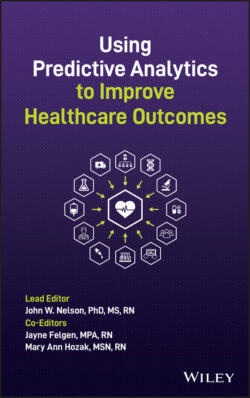Читать книгу Using Predictive Analytics to Improve Healthcare Outcomes - Группа авторов - Страница 62
The Importance of Interdisciplinary Collaboration in Data Analysis
ОглавлениеNurses have always been a driving force in quality. Whether at the chief nurse officer's level or leading the organization's quality improvement department, nursing is charged with providing and ensuring excellent patient care. However, application of the quality data is interdisciplinary by nature, as each discipline's care delivery impacts the others. In our organization, after the addition of a data analyst and the PSI RNs, people in other disciplines observed that nursing had made significant sustainable improvements in care and outcomes. They started to ask for consultation from nursing in the proper use of predictive analytics and its application for operational refinement and outcomes improvement. Leaders in radiology asked nursing to teach their staff members how to examine the data and how to use the same brainstorming techniques the nursing staff had used to develop action plans.
A memorable example of interdisciplinary impact on outcomes was the presumably “cost‐effective” decision to change the color of caps used for central lines. Although to the products and purchasing team it was just a color, and the yellow ones were less expensive than the green ones, they had no idea the impact the change in cap color would make on our infection control practices. After the cap change, the catheter‐associated infections in the ICU began to rise, and it was not until the interdisciplinary team dove deeply into the discussion of line maintenance, and then finally down to cap use (an element rarely thought of), that we discovered what had gone wrong. It was becoming clearer to people throughout the organization that everybody's input matters.
Although to the products and purchasing team it was just a color, and the yellow caps were less expensive than the green caps, they had no idea the impact the change in cap color would make on our infection control practices.
